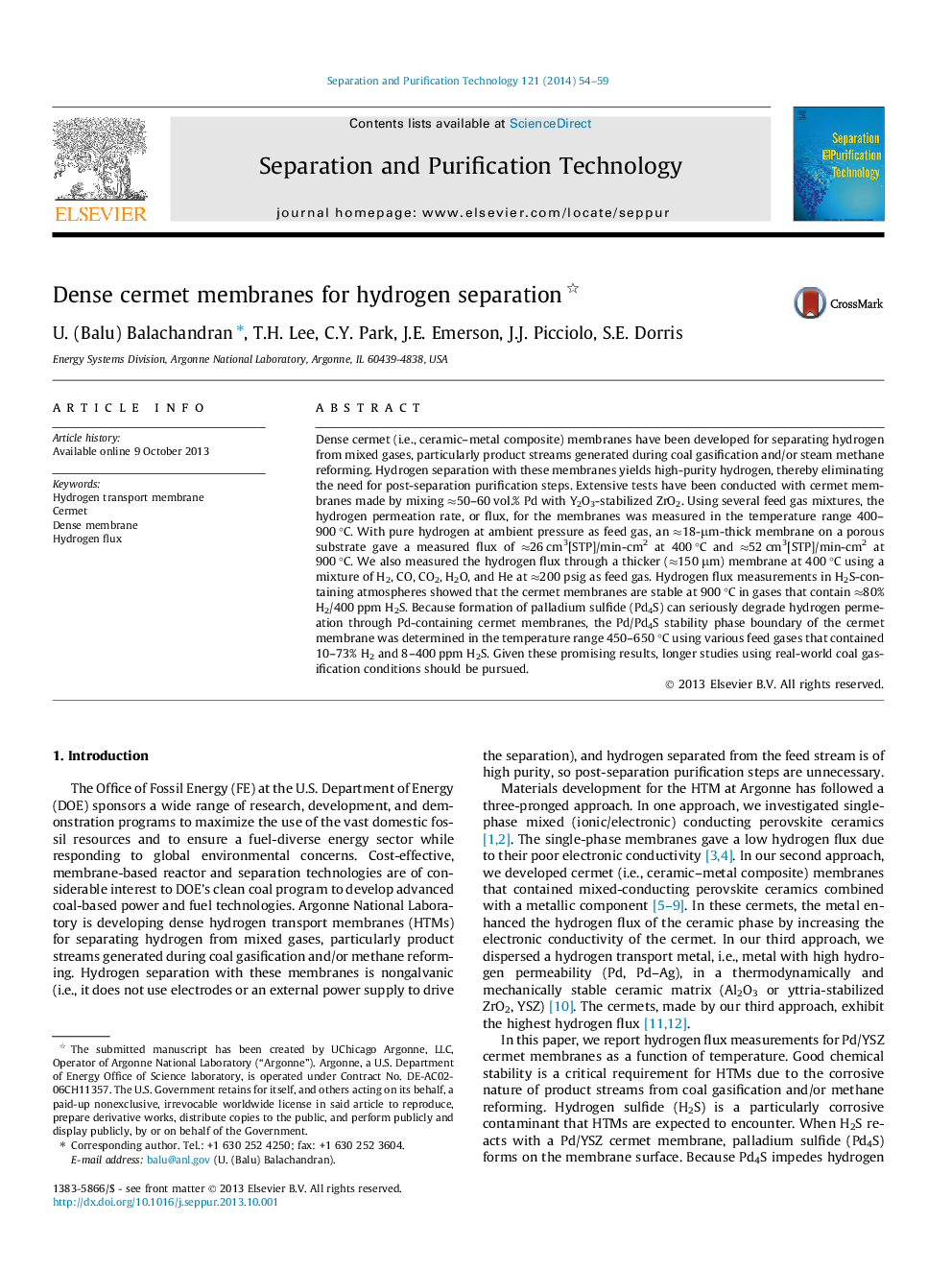| کد مقاله | کد نشریه | سال انتشار | مقاله انگلیسی | نسخه تمام متن |
|---|---|---|---|---|
| 641421 | 1456998 | 2014 | 6 صفحه PDF | دانلود رایگان |
• Cermet (ceramic–metal) membranes have been developed for hydrogen separation.
• Flux is limited by the bulk diffusion of hydrogen through metal phase.
• Long term stability for a period of 4 months showed relatively stable flux.
• Flux showed no degradation in synthesis gas mixture at high pressures (≈200 psig).
• Membrane is stable in atmospheres containing up to 400 ppm H2S and 80% H2.
Dense cermet (i.e., ceramic–metal composite) membranes have been developed for separating hydrogen from mixed gases, particularly product streams generated during coal gasification and/or steam methane reforming. Hydrogen separation with these membranes yields high-purity hydrogen, thereby eliminating the need for post-separation purification steps. Extensive tests have been conducted with cermet membranes made by mixing ≈50–60 vol.% Pd with Y2O3-stabilized ZrO2. Using several feed gas mixtures, the hydrogen permeation rate, or flux, for the membranes was measured in the temperature range 400–900 °C. With pure hydrogen at ambient pressure as feed gas, an ≈18-μm-thick membrane on a porous substrate gave a measured flux of ≈26 cm3[STP]/min-cm2 at 400 °C and ≈52 cm3[STP]/min-cm2 at 900 °C. We also measured the hydrogen flux through a thicker (≈150 μm) membrane at 400 °C using a mixture of H2, CO, CO2, H2O, and He at ≈200 psig as feed gas. Hydrogen flux measurements in H2S-containing atmospheres showed that the cermet membranes are stable at 900 °C in gases that contain ≈80% H2/400 ppm H2S. Because formation of palladium sulfide (Pd4S) can seriously degrade hydrogen permeation through Pd-containing cermet membranes, the Pd/Pd4S stability phase boundary of the cermet membrane was determined in the temperature range 450–650 °C using various feed gases that contained 10–73% H2 and 8–400 ppm H2S. Given these promising results, longer studies using real-world coal gasification conditions should be pursued.
Journal: Separation and Purification Technology - Volume 121, 14 January 2014, Pages 54–59
